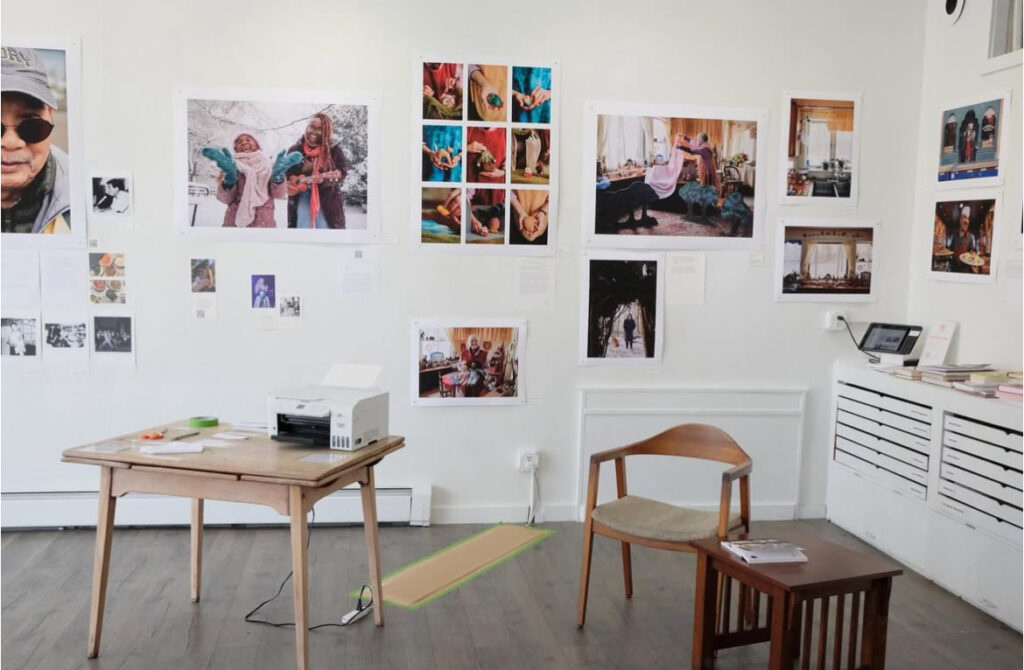Mei Tao is the co-curator of The Art of Care, an exhibition Proposal Series.
March 16, 2025
Can you tell us a little about yourself?

My name is Mei Tao, I was born in China and raised in Brooklyn, I am a mother and a photographer. I’ve worked in fashion for over 30 years where I’ve had the privilege of traveling the world, experiencing different cultures, meeting new people and sometimes working closely with crews I would never see again. I’ve always given myself personal projects, with no clients in mind, just for me, they are entirely of people I know intimately. Returning to them over decades, this body of work is very grounding for me. Photography is where Cameron Russell, my collaborator, and I intersect, we both understood the power of imagery so profoundly, it can seduce or tell the truth. We’ve worked together for decades in fashion, and on small independent projects, but this is our biggest one yet!
Can you tell us about The Art of Care exhibition? How did you conceive of the idea for it?
The Art of Care is our (@cameronrussell & @taomeitao) ongoing creative project to record, celebrate, and share the art of caregivers.
The Art of Care seeks to celebrate often-overlooked forms of caregiving, such as storytelling, music, and meal preparation. Were there any unexpected discoveries about the artistry of care work that emerged during this project?
We live in a culture where we are constantly looking and seeking the next big thing, something unknown, something new and shiny, the cycle of refresh and disposability have only grown quicker. The Art of Care is recognizing those who have always been with us, held us, nurture us. When we were photographing each caregivers, I was shown (again), they practice their care work everyday, perfecting it over decades. The divine inspiration we seek have always been right in front of us.

In works like Where are you Mrs. Bedard? and She Sings to Me and I Sing to Her there is a profound sense of connection and intimacy. How did you approach building trust with your subjects to authentically represent their caregiving roles?
To see them and listen. Being photographed can be a very unnatural state for many. I try to create an atmosphere where one does not feel they need to perform but just be. Cameron already had a wonderful rapport with Mrs. Bedard and I was able to lean into their conversations and make suggestions as we chatted away while we took photos. Cameron and I ping pong together to make these intimate images happen.
Caregiving is often seen as invisible labor. How do you approach capturing these moments—often perceived as “mundane” or “ordinary”—and transform them into powerful visuals that allow viewers to deeply connect with both the caregivers and the care being given or received?
The Art of Care is about recognizing extraordinary practices are more quiet and abundant than we might think. There is no need to transform them. In witnessing we find ourselves in awe. Our attention renders us reverent of their artistry and urgency. Care is the work that sustains life.
Some of the caregivers featured in the exhibition are local to the gallery. Can you share some of their stories?
Because the work of caregivers is so often ephemeral, made for an audience that rarely extends beyond the home, classroom, or bedside, we thought the best way to kick off this project was at home. Because too often these experts are known only to us, and sometimes to the broader world. Or, Cameron’s home to be specific. So this show includes both of our parents, both of Cameron’s grandmothers, contributions from dear friends, local parents and community members, and local legends like Jamal and Manal Abu-Rubieh who run Brookline Lunch, Mitch Ryerson the sculptor whose work is in playgrounds across our city (and now world as he flat packs them to send to refugee camps), and Alice Turkel who has been an arts educator, school committee member, and parent activist for decades.


You each have backgrounds in the fashion industry. How has this experience influenced this exhibition and your feelings about photography in general?
I am a photographer who loves fashion and was fortunate to make a career in the fashion industry. For me, working in fashion gave me the discipline to make decisions and execute, the fashion assignments are always on a fixed timeline, requiring me to multitask, work with different members of the team to tell the story of a fashion brand.
We started this project 2 yrs ago BUT put the exhibition together in 2 weeks. Cameron and I were laser focused, completely collaborative and trusted that we would both honor the caregivers who told us their story. Our decades of collaboration and creative practice are a strong foundation to sprint and play, create with rigor and responsiveness.
You are each mother’s. How has this role shaped your perception of the importance of caregiving?
Motherhood is lifelong caregiving, we belong to them. And our work caregivers are ever evolving. We care through whatever political, climate, geographic, technological, economic shifts that come, this world will require us to pivot, make hard choices, and endure. It wasn’t until I became a mother I saw my mother in a different light – it’s not always pretty, requires self sacrifice and often thankless. It takes a village to raise a child, sometimes your village is big, sometimes it’s small, sometimes the village is just one. Caregivers are essential to our collective survival.
Is there anything else you would like us to know?
Our collaboration and our interest in art as care work are ongoing.
At the end of February we’re installing a pop-up version of the show in Mexico City at Jardin Prim as part of the feminist Decididas festival. We would love for this exhibition to travel to different locations so we can continue to learn from many more caregivers, and build a shared archive of their craft and teachings.